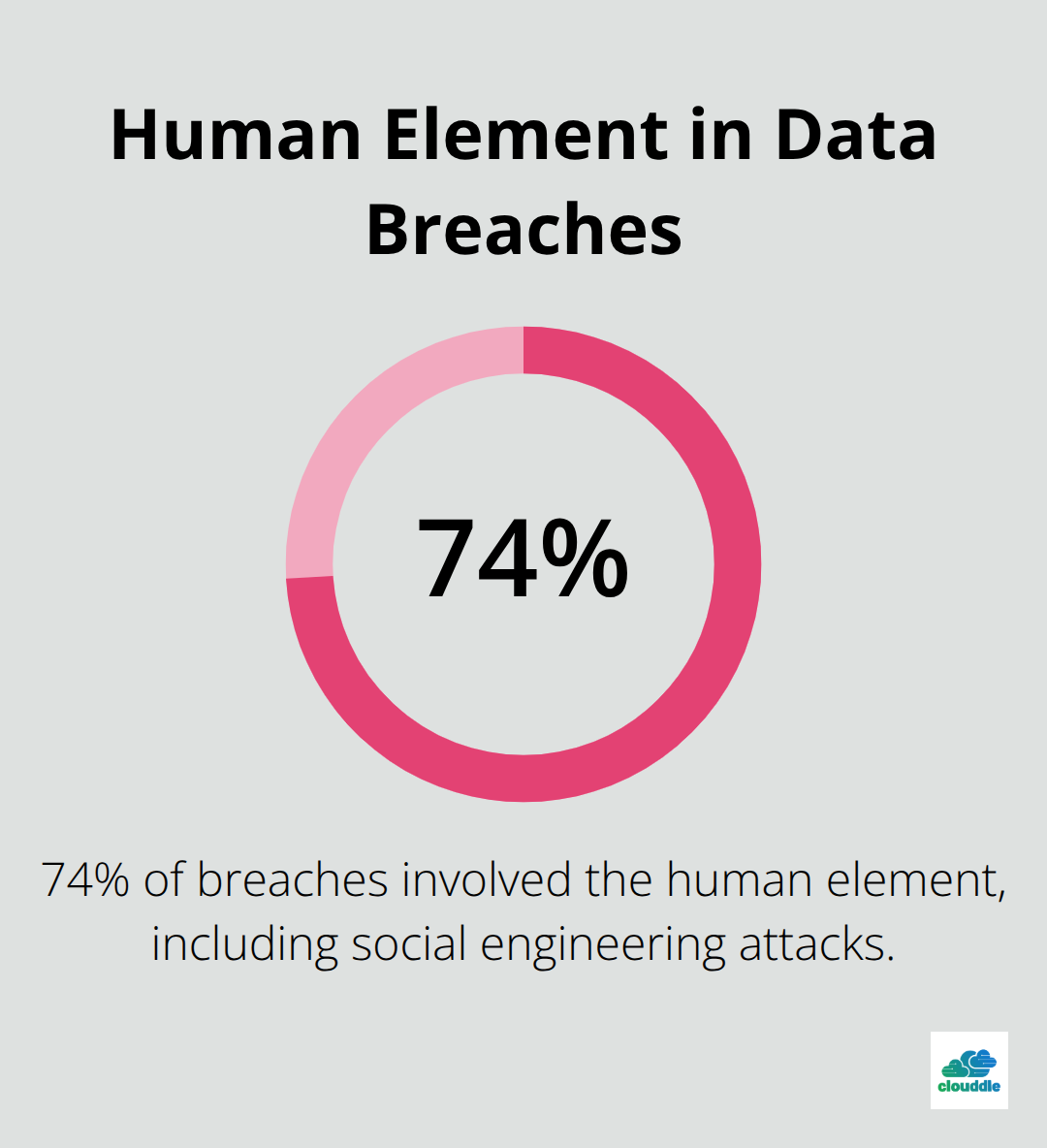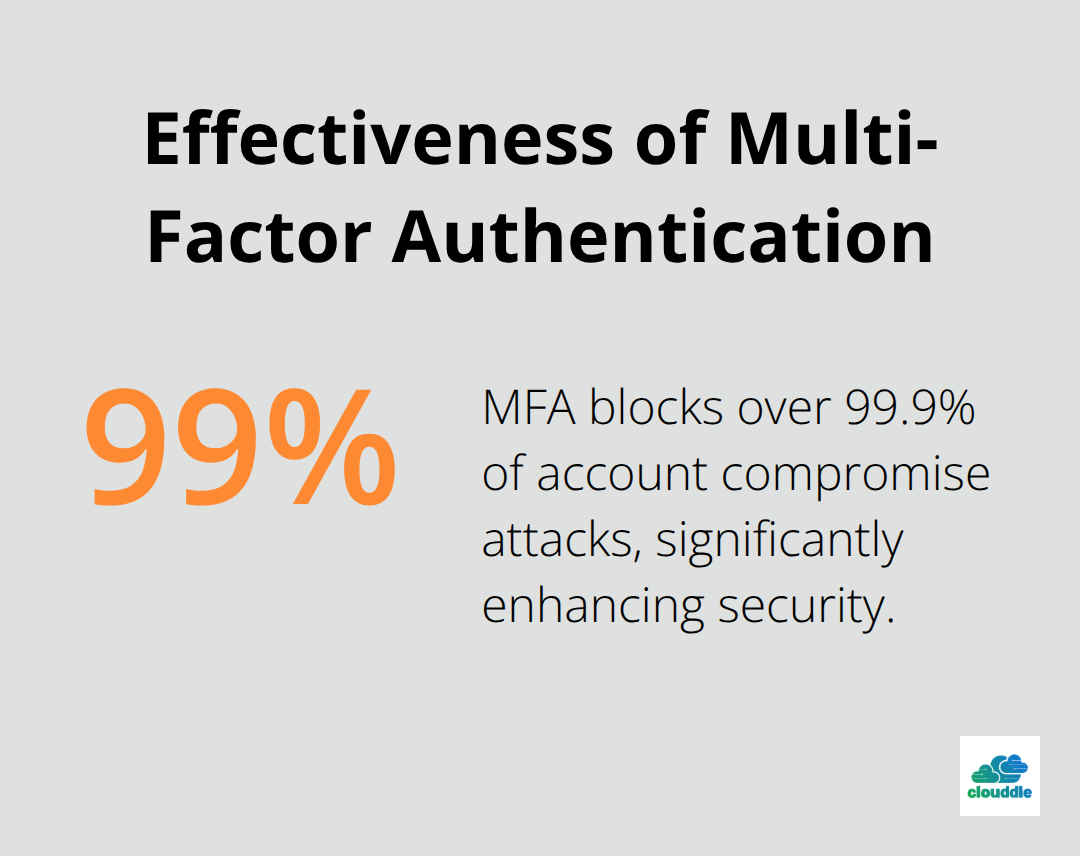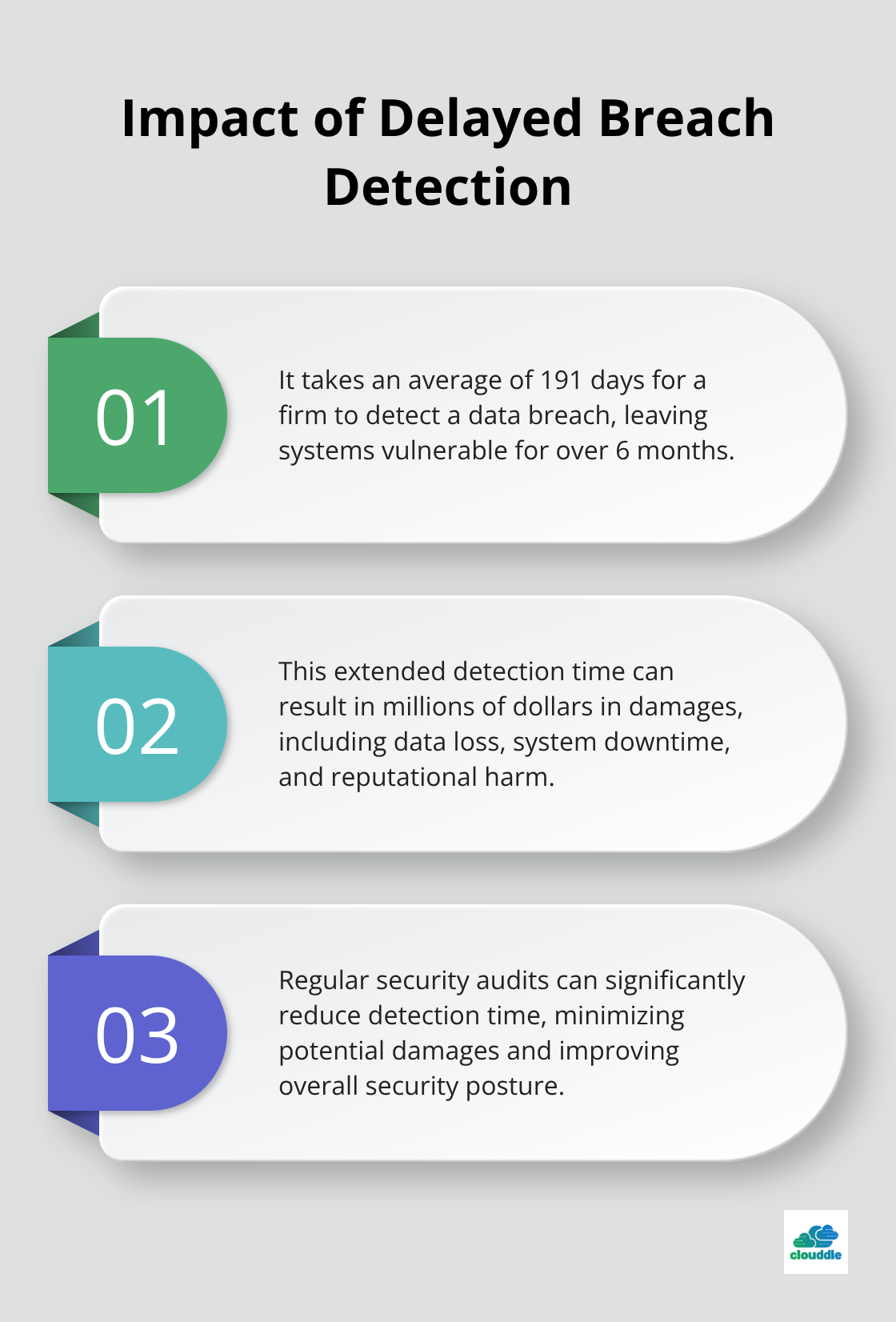Network security threats are evolving at an alarming rate, putting businesses at risk of devastating breaches and data loss. At Clouddle, we’ve seen firsthand how proper network security strategies can make or break an organization’s defenses.
This post will guide you through implementing effective network security measures, from essential components to best practices. We’ll equip you with practical tools and techniques to safeguard your digital assets and stay ahead of cybercriminals.
Today’s Network Security Landscape: Evolving Threats and Impacts
Network security threats have become more sophisticated and pervasive. The frequency and complexity of attacks targeting businesses across various sectors continue to increase at an alarming rate.
The Ransomware Epidemic
Ransomware attacks have seen significant changes in the threat landscape. According to CrowdStrike’s 2023 Global Threat Report, there has been a 71% increase in malware-free attacks, a 95% increase in cloud exploitation, and a 112% increase in access broker ads on the dark web. These attacks encrypt critical data and demand payment for its release, often paralyzing business operations.
Advanced Persistent Threats (APTs): Silent Invaders
APTs represent long-term, targeted attacks that often remain undetected for months. These sophisticated threats (often state-sponsored) aim to steal sensitive data or disrupt critical infrastructure.
Supply Chain Vulnerabilities
Supply chain attacks have become a major concern. Cybercriminals target vulnerabilities in third-party vendors to gain access to multiple organizations. The SolarWinds attack in 2020 had significant financial impacts, with affected companies losing an average of 11% of their annual revenue.
The Human Element: A Persistent Weak Link
Despite technological advancements, human error remains a significant vulnerability. Verizon’s 2023 Data Breach Investigations Report revealed that 74% of breaches involved the human element, including social engineering attacks like phishing and pretexting.

The Staggering Financial Toll
The cost of cybersecurity breaches continues to rise. For small businesses, the average cost is $149,000 per incident, often leading to permanent closure for 60% of affected companies within six months.
These evolving threats and their potential impact on businesses underscore the importance of robust network security strategies. Organizations must stay vigilant and adapt their defenses to protect against these modern cybersecurity challenges. The next section will explore the essential components of a strong network security strategy to combat these threats effectively.
Building Your Network Security Arsenal
At Clouddle, we understand the importance of a robust network security strategy. Let’s explore the key components that form the backbone of an effective defense system.
Fortify Your Perimeter
Firewalls and intrusion detection systems (IDS) serve as your first line of defense. Modern Next-Generation Firewalls (NGFWs) offer application-level inspection and threat intelligence integration. Gartner predicts that by 2025, 70% of new firewall deployments will be NGFWs. When you select a firewall, look for features like deep packet inspection, sandboxing capabilities, and integration with threat intelligence feeds.
Intrusion Detection Systems complement firewalls by monitoring network traffic for suspicious activities. Implement both network-based IDS (NIDS) and host-based IDS (HIDS) for comprehensive coverage.
Secure Remote Access
Virtual Private Networks (VPNs) protect data in transit, especially with the rise of remote work. Look for solutions that offer strong encryption (AES-256 at minimum), support for multi-factor authentication, and split-tunneling capabilities to optimize performance.
When you implement VPNs, consider scalability and ease of use to ensure adoption across your organization.
Strengthen Authentication
Multi-factor authentication (MFA) blocks over 99.9% of account compromise attacks. Implement MFA across all critical systems and applications, prioritizing those that handle sensitive data or provide administrative access.

Consider adaptive MFA solutions that factor in contextual information (like user location, device health, and behavior patterns) to determine the level of authentication required. This approach balances security with user experience, reducing friction for legitimate users while maintaining strong protection against unauthorized access.
Stay Ahead of Vulnerabilities
Regular software updates and patch management close security gaps. 60% of breaches in 2019 involved unpatched vulnerabilities. Implement a robust patch management process that includes:
- Regular vulnerability scans
- Prioritization based on risk assessment
- Testing patches in a non-production environment
- Automated deployment where possible
- Verification and reporting
A vulnerability management platform can streamline this process and ensure no critical patches slip through the cracks.
Empower Your Human Firewall
Your employees remain both your greatest asset and potential vulnerability. A comprehensive security awareness program is essential.
Effective training programs should:
- Occur regularly, not just as annual compliance exercises
- Include simulated phishing exercises
- Cover both work and personal cybersecurity practices
- Adapt to emerging threats and changing work environments
Measure the effectiveness of your training through metrics like phishing simulation click rates, incident reporting rates, and overall security posture improvements.
These core components significantly enhance your organization’s security posture. However, the cybersecurity landscape constantly evolves, and a static approach won’t suffice. In the next section, we’ll explore best practices for maintaining and adapting your network security strategy to stay ahead of emerging threats.
How to Implement Effective Network Security Strategies
At Clouddle, we know that implementing effective network security isn’t a one-time task-it’s an ongoing process that requires vigilance, adaptability, and a proactive approach. Here’s how you can strengthen your network defenses and stay ahead of cyber threats.
Conduct Regular Security Audits
Security audits act as your radar for detecting vulnerabilities before attackers do. Try to conduct comprehensive audits at least quarterly, with more frequent checks for critical systems. Use a combination of automated scanning tools and manual penetration testing to uncover both known and novel vulnerabilities.
Regular security audits can significantly reduce the time it takes to detect a breach. According to a Ponemon Institute research, it takes 191 days on average for a firm to detect a breach, let alone counter the attack. This significant time difference can mean millions in saved costs and preserved reputation.

When you conduct audits, focus on:
- Access controls and user privileges
- Network device configurations
- Compliance with industry standards (e.g., PCI DSS, HIPAA)
- Third-party vendor security practices
Document findings meticulously and prioritize remediation based on risk levels. Establish a clear timeline for addressing vulnerabilities and assign responsibility to specific team members or departments.
Implement Network Segmentation
Network segmentation contains breaches and limits lateral movement within your network. Divide your network into smaller, isolated segments to create chokepoints that are easier to monitor and control.
Start by mapping your network and identifying critical assets. Group systems with similar security requirements together. Use firewalls, virtual LANs (VLANs), and access control lists (ACLs) to enforce boundaries between segments.
Micro-segmentation in point-of-sale systems can be a critical security measure. A microsegmentation solution that enables legitimate intersystem communication but stops malicious communication becomes crucial in preventing potentially catastrophic breaches from spreading.
Encrypt Sensitive Data
Encryption serves as your last line of defense if other security measures fail. Implement strong encryption for data at rest and in transit. Use industry-standard protocols like TLS 1.3 for data in motion and AES-256 for data at rest.
Focus on encrypting:
- Customer personal information
- Financial data
- Intellectual property
- Employee records
Don’t neglect proper key management. Rotate encryption keys regularly and store them securely, separate from the data they protect.
Establish and Test Incident Response Plans
An incident response plan acts as your playbook for when things go wrong. It should outline clear steps for detecting, containing, and mitigating security incidents.
Key components of an effective incident response plan include:
- Defined roles and responsibilities
- Communication protocols
- Containment strategies
- Evidence preservation procedures
- Recovery and post-incident analysis steps
Having a plan isn’t enough-you need to test it regularly. Conduct tabletop exercises and simulated breach scenarios to identify gaps and improve response times.
Implement Continuous Monitoring
In today’s threat landscape, periodic checks don’t suffice. Implement continuous monitoring of network traffic, user activities, and system logs to detect anomalies in real-time.
Use Security Information and Event Management (SIEM) tools to aggregate and analyze log data from across your network. Set up alerts for suspicious activities like:
- Multiple failed login attempts
- Unusual data transfer patterns
- Access to sensitive resources outside of normal business hours
- Unexpected changes to system configurations
The goal isn’t just to collect data-it’s to derive actionable insights. Regularly review and refine your monitoring rules to reduce false positives and focus on genuine threats.
Final Thoughts
Effective network security strategies require constant adaptation and vigilance. A robust defense combines technical measures like firewalls, intrusion detection systems, and VPNs with comprehensive employee training. Regular security audits, network segmentation, and data encryption form the backbone of a strong security posture.
The complexity of modern cybersecurity challenges often requires expert guidance. Managed security service providers offer specialized knowledge, advanced tools, and round-the-clock monitoring. We at Clouddle provide comprehensive network security strategies as part of our managed IT and security services.
Our Network as a Service (NaaS) solution integrates networking, entertainment, and security. This allows businesses to focus on growth while we manage the technical aspects of maintaining a secure digital environment. For more information on how we can enhance your network security strategies, visit our website today.


